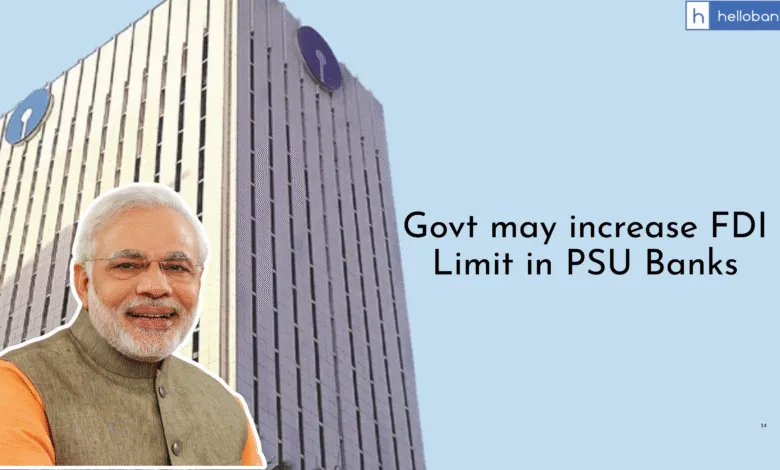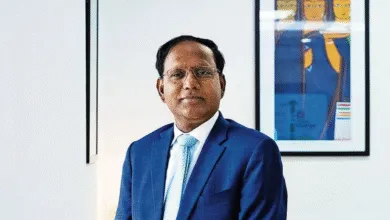Will Banks be Privatised? Govt planning to increase FDI Limit in PSU Banks

India is considering to increase the foreign investment limit in public sector banks (PSBs) from the current 20% to a higher level, in an effort to strengthen these banks and make it easier for them to raise capital.
This proposal is part of a wider set of economic reforms being discussed by policymakers to support growth amid rising global uncertainties.
A senior government official clarified that while higher foreign stakes may be allowed, the government’s shareholding in PSBs will not fall below 51%, thereby ensuring their public sector status. A final decision will be taken at the highest level of government.
Why is Government increasing FDI Limit?
The Government wants to broaden the investor base and ensure PSBs have enough resources to support credit growth and economic development. The idea is to diversify capital sources and make it easier for public sector banks to raise funds whenever needed.
Indian retail investors, mutual funds, and institutional investors already invest in banks. But their capacity to provide large, long-term capital is limited compared to global funds. By allowing higher foreign investment, PSBs can tap into global pools of capital (sovereign wealth funds, pension funds, global banks, etc.), which often provide more stable and larger funding.
In the past decade, the government has put in large amounts of taxpayer money to recapitalise weak public sector banks (especially after the bad loan crisis). With limited fiscal space today (lots of money already going into infrastructure, welfare, defence, etc.), the government doesn’t want to keep using its own funds every time banks need capital.
PSB Manthan 2025
The Department of Financial Services (DFS), Ministry of Finance, had organised PSB Manthan 2025 from 12 September to 13 September 2025. It was a two-day programme in Gurugram, Haryana. The event was chaired by the DFS Secretary and was attended by leaders from the public and private financial sector, regulators, policymakers, academicians, industry experts, technologists, and practitioners.
Senior dignitaries included Shri Swaminathan J., Deputy Governor, RBI; Dr. V. Anantha Nageswaran, Chief Economic Adviser; Shri M. Damodaran, Former Chairman, SEBI; Shri Debasish Panda, Former Chairman, IRDAI; former RBI Deputy Governors Shri R Gandhi, Shri N. S. Vishwanathan, and Shri M. K. Jain; and former SBI Chairmen Shri Rajnish Kumar and Shri Dinesh Kumar Khara, among other thought leaders.
PSBs were urged to move away from legacy systems, adopt agile and interoperable platforms, and strengthen cyber resilience. They were also advised to align with India’s Digital Public Infrastructure (DPI), adopt responsible AI frameworks, and avoid vendor lock-in by working with open technology partners.
PSBs have been asked to expand their role in sunrise sectors such as renewable energy, electric mobility, green hydrogen, semiconductors, shipbuilding, and digital industries, alongside strengthening traditional sectors like agriculture, MSMEs, housing, and infrastructure.
PSBs have been asked to work closely with fintechs for digital innovation, with academia for research, with global institutions for best practices, and with entrepreneurs for tailored solutions. Such partnerships would accelerate the transformation of PSBs into globally competitive institutions.
The discussions also highlighted the importance of human capital and workforce readiness, stressing continuous HR training, employee reskilling, and creating an inclusive, agile, and future-ready workforce to meet the demands of the digital era.
An important outcome of PSB Manthan 2025 was the emergence of a shared roadmap for PSBs. The event outlined immediate priorities in governance, customer service, technology adoption, and credit growth, while also setting a long-term vision for PSBs to evolve into global financial institutions.
India has also set a target of creating at least two globally competitive banks that can rank among the top 20 banks worldwide. This initiative is part of the government’s Viksit Bharat 2047 vision, which aims to make India a developed nation by 2047. At present, India’s banking system does not feature among the global top 20. The State Bank of India (SBI), which is the largest Indian bank, is ranked 43rd in the world by assets. Click here to read this news.
